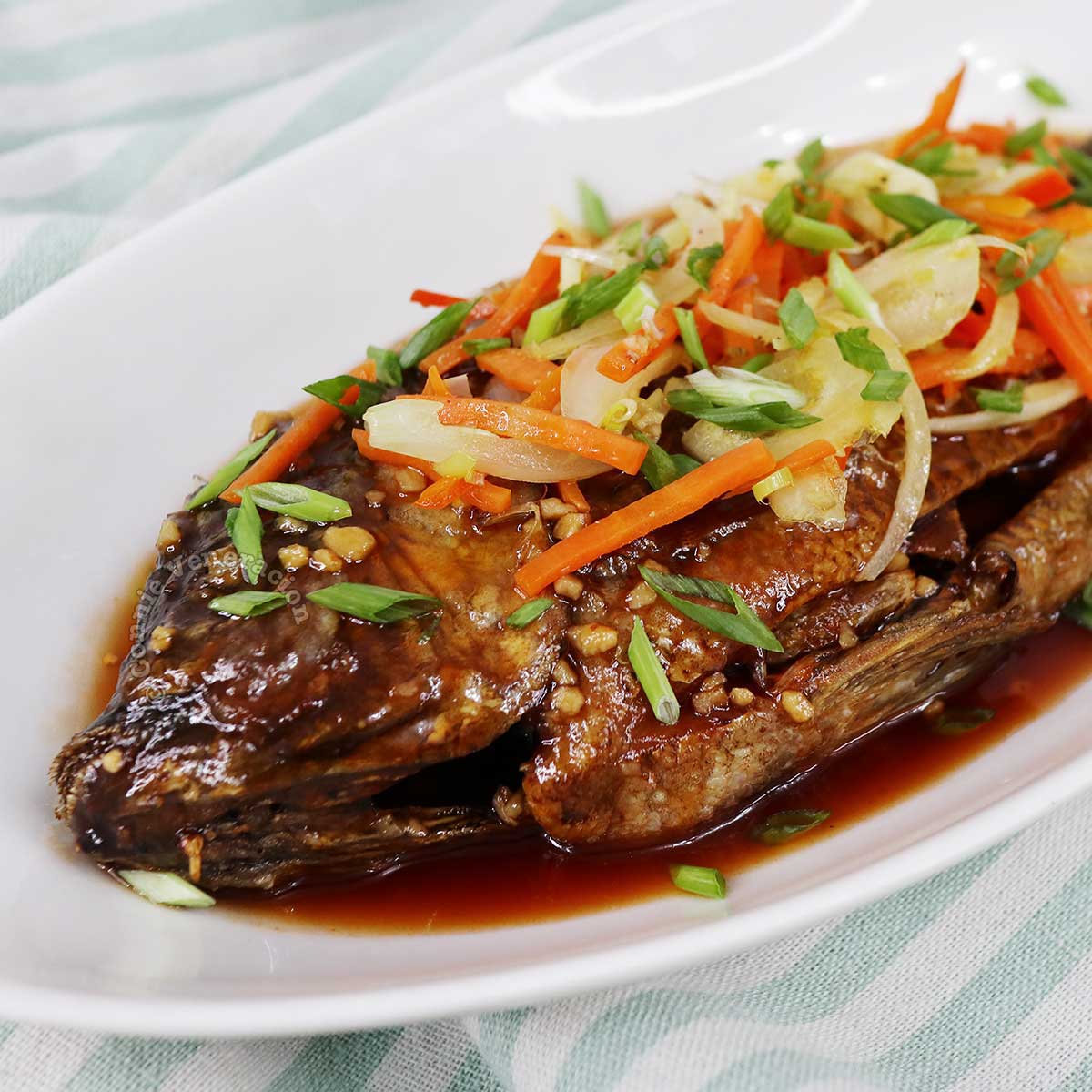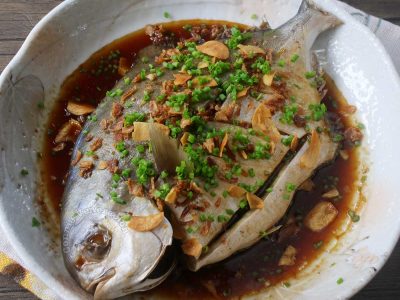If you have a good background of Spanish cuisine, you’d probably be aware that Spanish escabeche is essentially sour, not sweet and sour. So, how can a sweet and sour fish dish be a derivative of something that is essentially a sour dish? It didn’t seem to make sense and I wondered about it a lot.
Middle Eastern and Spanish escabeche
To begin with, escabeche is more Middle Eastern than native Spanish. The word itself comes fromal-sikbaj, a sweet and sour meat dish cooked with vinegar and honey. It entered Spanish culinary tradition when the Iberian Peninsula (Portugal, Spain, southern France and Andorra) was conquered and ruled by Muslims.
As escabeche evolved in what eventually became Spain, it transformed into a mostly acidic dish. The addition of vegetables like carrots provided a subtle sweetness to cut through the acidity.
Filipino escabeche
Curiously, after Spain colonized the Philippines and introduced escabeche, the Filipinos adapted it into a sweet and sour dish by mixing vinegar with sugar. In my mind, there are two possible explanations for this.
First, the Chinese (with whom the natives had been trading before the arrival of the Spanish colonists) had already introduced sweet and sour dishes in the island. By combining julienned vegetables (a feature of Spanish escabeche) with Chinese sweet and sour sauce, Filipino-style escabeche was born.
The second possibility is that Middle Eastern escabeche, the sweet-sour dish that the Muslims brought with them to Spain, was fully integrated in the cuisine of southern Philippines which already had a large Muslim population before the Spaniards arrived.
Ergo, the dish itself was not introduced by Spain. Rather, Filipinos adapted the Spanish name for a dish that was already being cooked in the islands before Magellan set foot on the island of Homonhon in 1521.
Tips for cooking Filipino escabeche
Filipino fish escabeche is essentially fried fish to which the sweet and sour sauce, and julienned vegetables, are added just before serving.
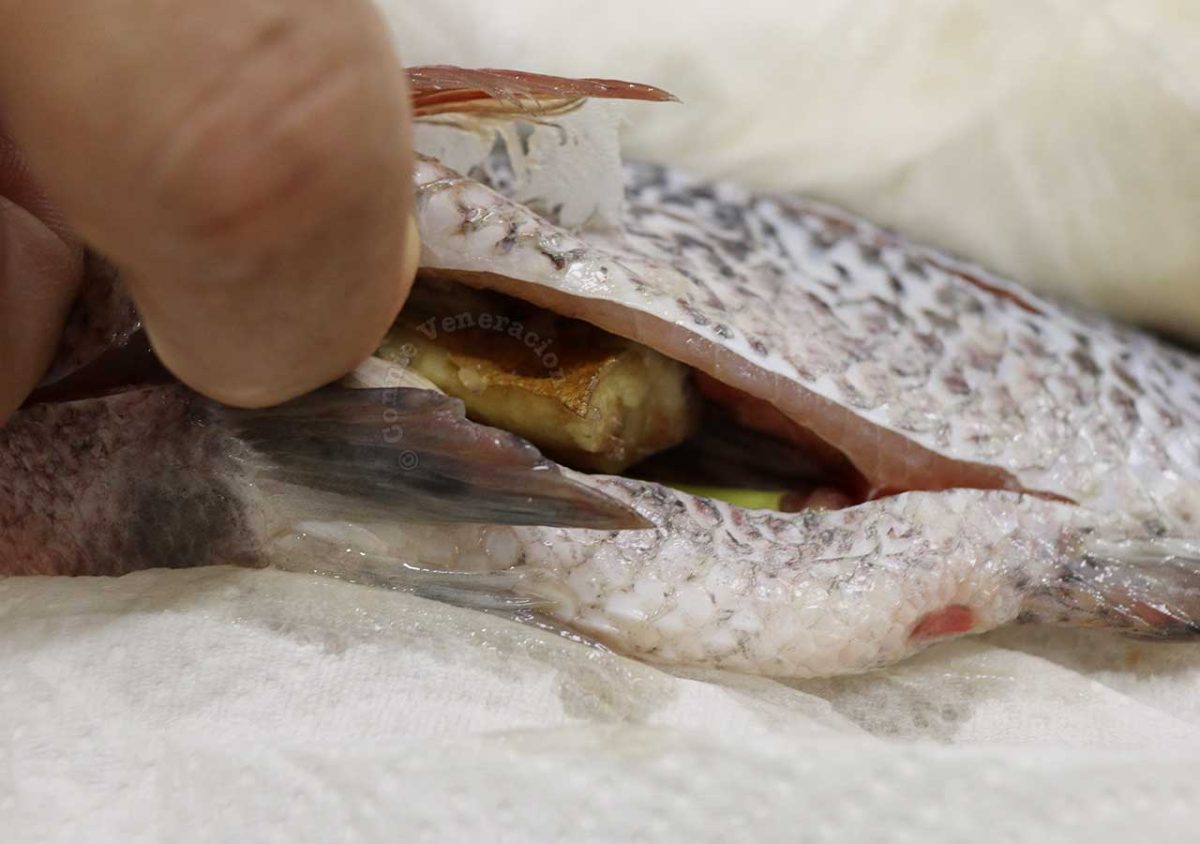
The fish is not marinated in the sauce. It is rinsed, patted dry, scored and rubbed with salt and pepper. To make sure that it is flavorful and aromatic inside and out, the cavity is stuffed with lemongrass, garlic and ginger. Then, the fish is left to soak up all those flavors.
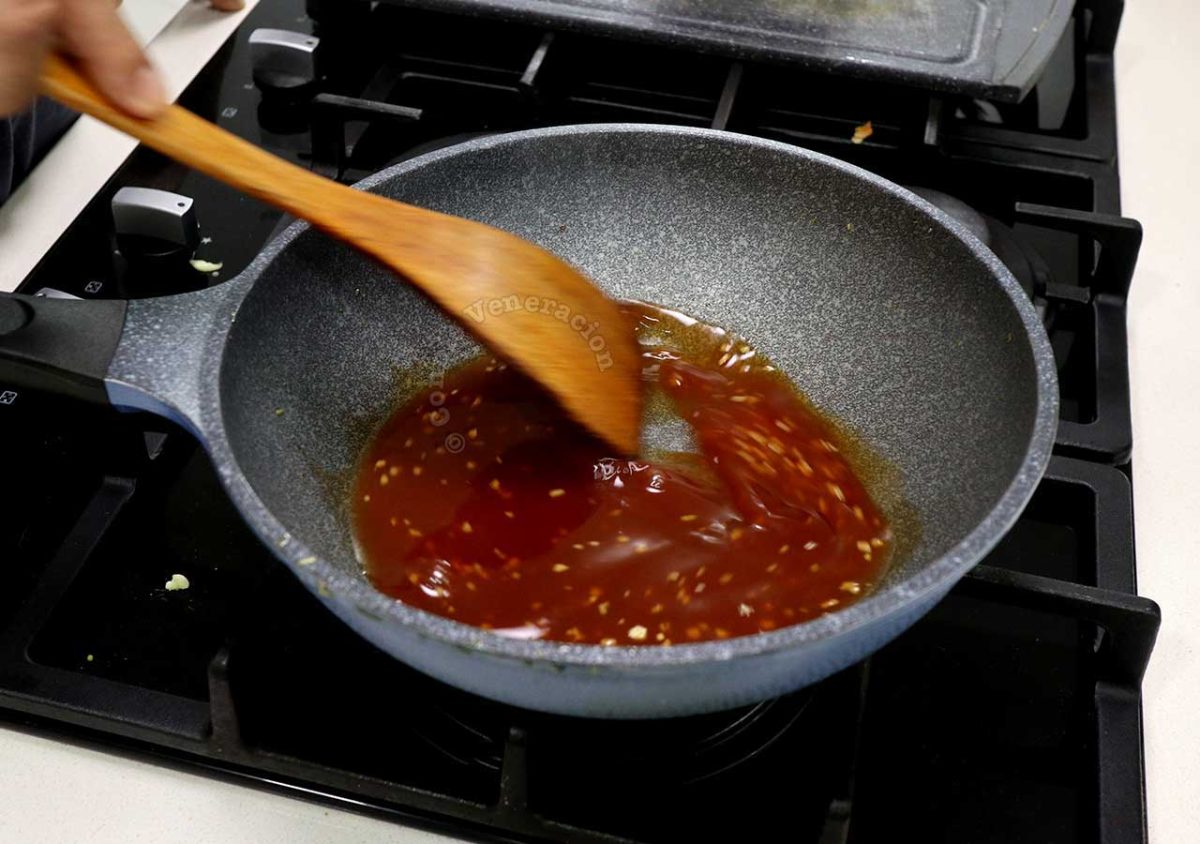
Meanwhile, the sweet sour sauce is cooked by heating vinegar, sugar, salt and tomato sauce. Starch dispersed in water is added to thicken it.
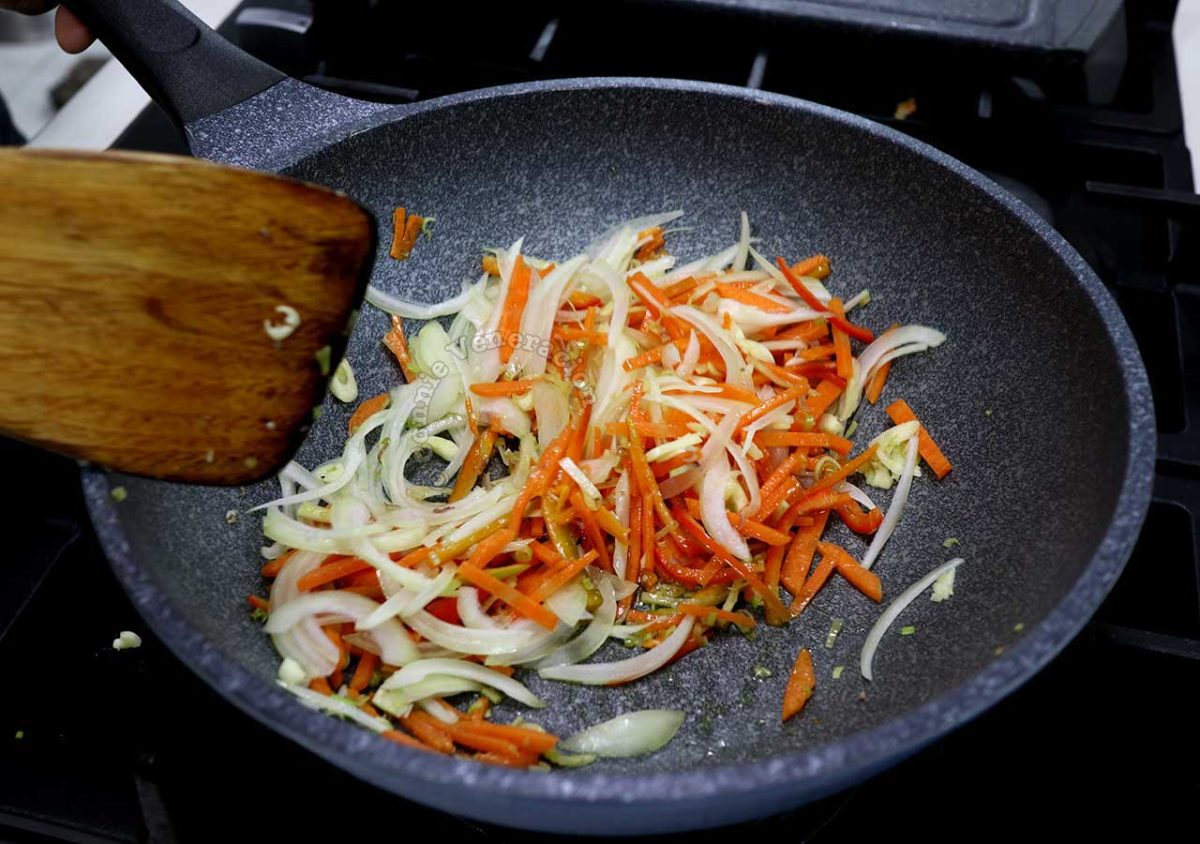
In another pan, sliced lemongrass, garlic and ginger are sauteed until aromatic. Onion, carrot and bell pepper are added and everything is cooked together until the vegetables are done but still lightly crisp.
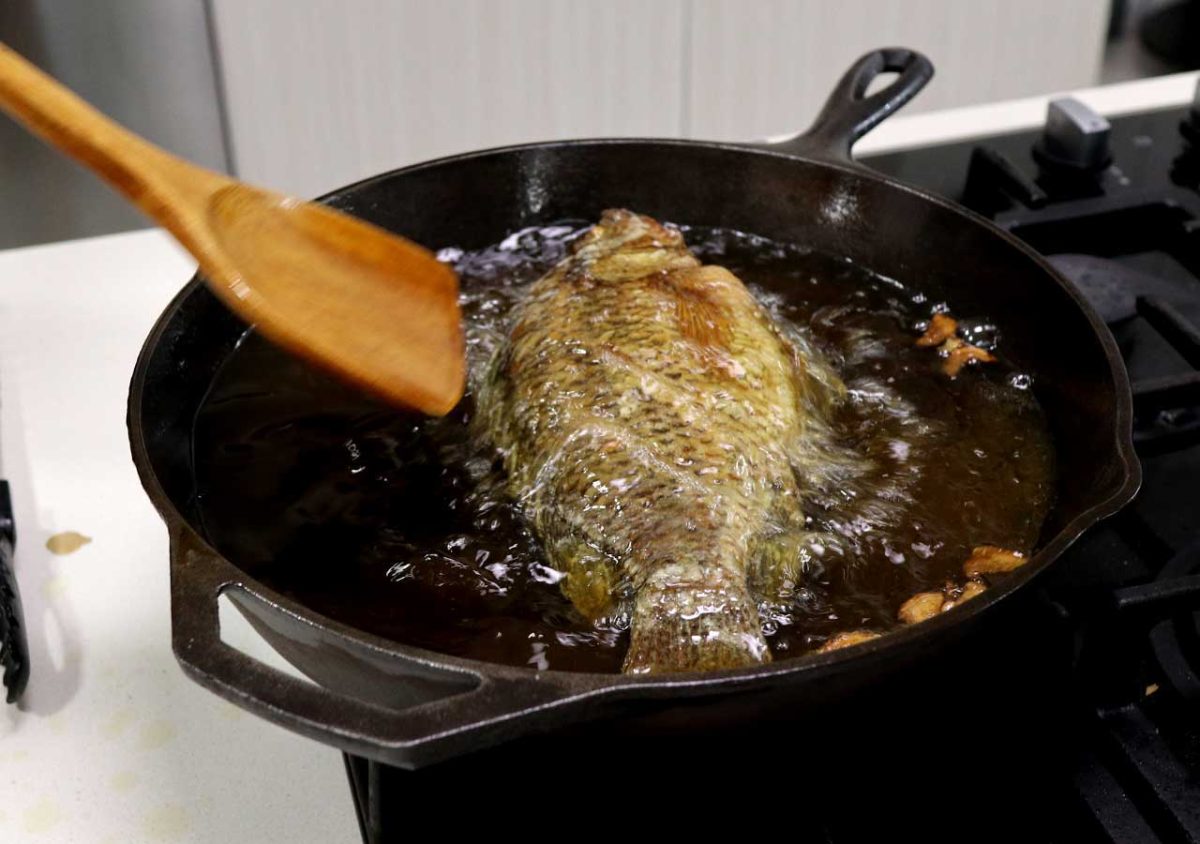
The marinated tilapia is lightly coated with starch and deep fried. A note here: please don’t overcook the fish. You want the outside to be golden and crisp but the inside should remain moist.
With the fish, sauce and vegetables done, the dish is assembled. The fish is laid on a plate or in a shallow bowl, the sauce is drizzled over it and the vegetables are arranged on top.
Tilapia escabeche
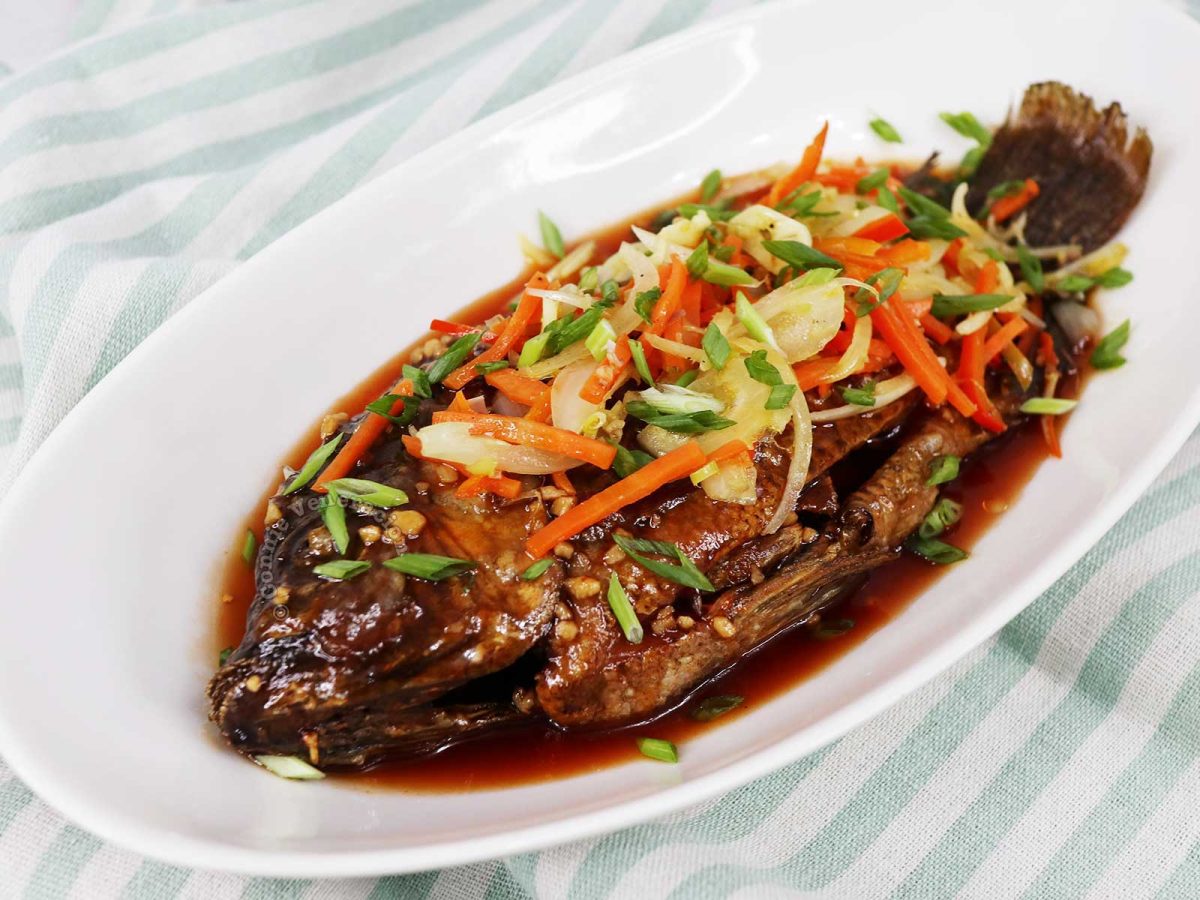
Ingredients
- 2 whole tilapia (about 1.2 kilograms total weight) cleaned and gutted
- 2 tablespoons rock salt
- ½ teaspoon ground black pepper
- 2 cloves garlic peeled and lightly pounded
- 2 one-inch knobs ginger peeled and lightly pounded
- 2 stalks lemongrass (white portion only) lightly pounded
Vegetable topping
- 1 onion
- 2 cloves garlic
- 2 stalks lemongrass white portion only
- 1 one-inch knob ginger
- 1 small carrot
- 1 bell pepper
Sweet sour sauce
- ¼ cup vinegar
- ½ cup white sugar
- ½ teaspoon salt
- 2 tablespoons tomato sauce
- 2 teaspoons corn starch dispersed in two tablespoons water
To cook tilapia escabeche
- cooking oil
Instructions
Season the fish
- Rinse the tilapia and pat dry with paper towels.
- Score both sides of the fish.
- Rub the salt and pepper evenly over the entire surface of both fish.
- Divide the lemongrass, garlic and ginger into two portions, and use one portion to stuff the cavity of each fish.
- Place the fish in a covered container and leave to marinate in the fridge for two hours.
Prep the vegetables
- Peel and thinly slice the onion.
- Peel and mince the garlic.
- Peel off and discard the tough outer stalks of the lemongrass then thinly slice the tender portion.
- Peel and julienne the ginger and carrot.
- Cut the bell pepper into halves, scoop out and discard the seeds. Julienne the deseeded bell pepper.
Make the sweet sour sauce
- Stir the vinegar, sugar, salt and tomato sauce in a sauce pan.
- Heat the mixture, stirring often, until the sugar is completely dissolved.
- Pour in the starch solution and cook, stirring, until the sauce is thick and no longer cloudy.
Cook the vegetables
- Heat a tablespoon of cooking oil in a frying pan.
- Saute the sliced lemongrass, garlic and ginger until aromatic.
- Add the onion, carrot and bell pepper.
- Cook the vegetables just until done. Scoop out and set aside.
Fry the tilapia
- Take the fish out of the fridge and dry with paper towels once more.
- In a thick-bottomed frying pan, heat enough cooking oil to reach a depth of two inches.
- Lightly coat the tilapia with corn starch; shake off the excess.
- Fry the tilapia, turning them over for even cooking, until golden and crisp.
Assemble the tilapia escabeche
- Arrange the fried tilapia in shallow bowls.
- Drizzle sweet sour sauce over the fish.
- Top with the vegetables and sliced scallions.

